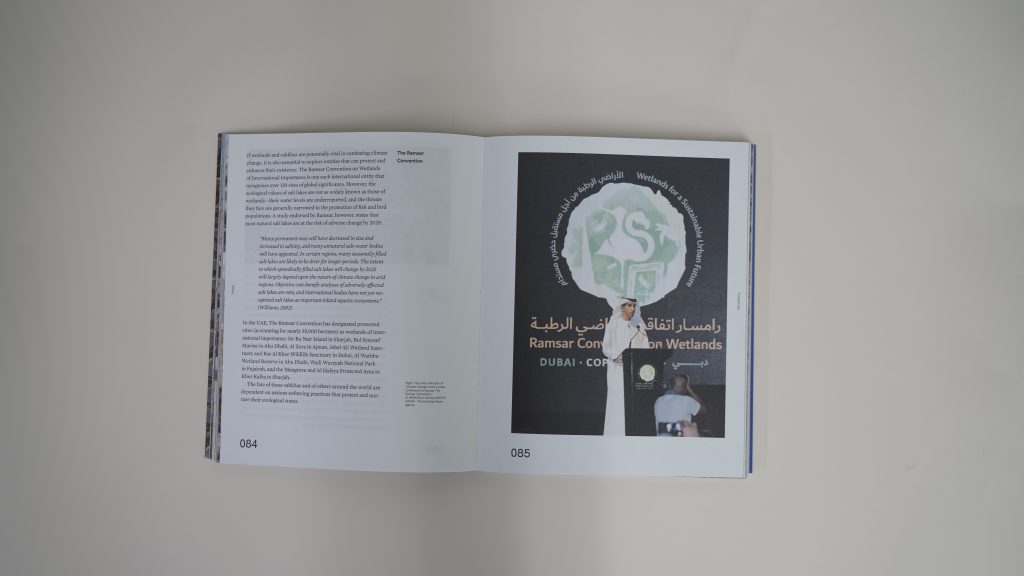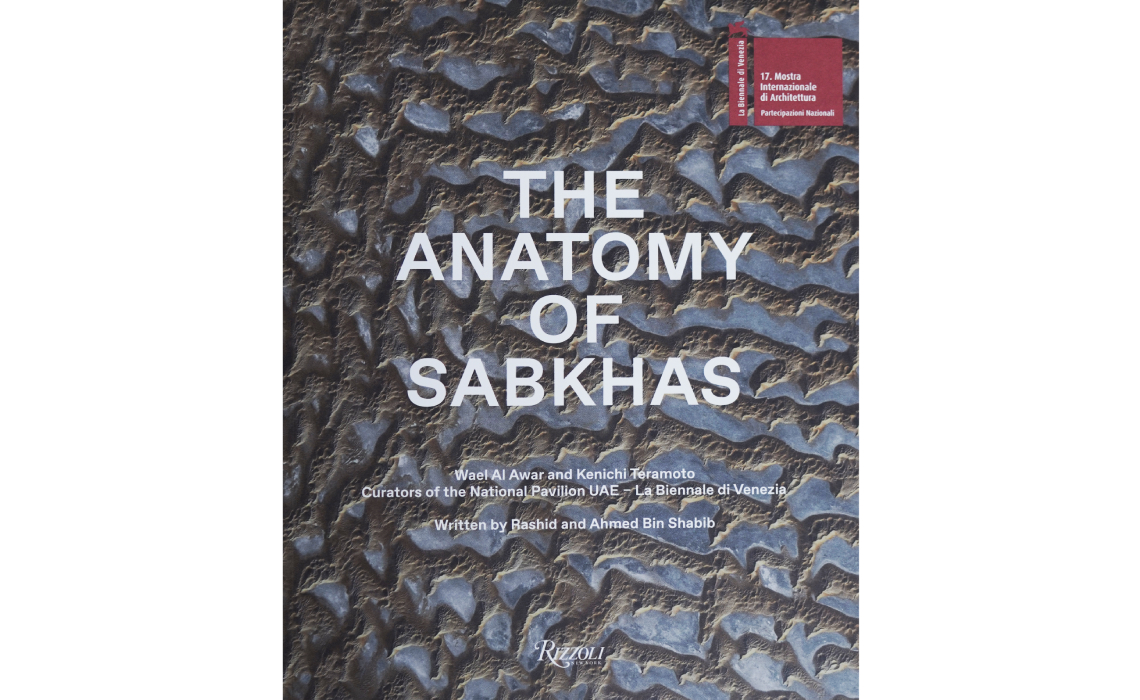Publisher: Rizzoli
rizzoliusa.com
Price: $35.00
Canvas rating: *****
The word sabkha, which refers to a natural salt flat, is an Arabic term Particularly valuable is discussion around the multitude of ways in which used to describe the relatively unexplored and overlooked natural sabkhas and salt can support the development of cities, through a phenomenon that makes up five percent of the UAE’s landscape. exploration of prominent architectural projects that further highlight The Anatomy of Sabkhas, published by Rizzoli and written by the potential uses in construction, as well as the many other ways in which architect brothers Rashid and Ahmed Bin Shabib, is a publication that these salt flats are used around the world and feature in our daily lives. complemented the exhibition Wetland at the 2021 Venice Biennale of Also interesting are the insights into the making of the exhibition Architecture. Co-edited by the UAE’s national pavilion curators Wael Wetland, which highlighted the future challenges and opportunities Al Awar and Kenichi Teramoto, the book illustrates the importance of facing sabkhas. sabkhas both within the region and across the world at large.

The book comprises two main topics of discussion, rural sabkhas seeking to learn more about the formation and myriad functions of these and urban sabkhas, through which the reader is invited to examine the unique natural features. It concludes with five personal stories by UAE structure, history and geography of sabkhas, along with their relationship residents in which they recount their memories of sabkhas, dating back to the wider ecosystem and economy. The extensive yet absorbable to the late 1960s and early 70s, which serve as cautionary reminders that approach comprises short essays accompanied and enhanced by sabkhas are worth preserving and will require particular conservation captivating photographs – including aerial shots – and archival records.

Particularly valuable is discussion around the multitude of ways in which sabkhas and salt can support the development of cities, through an exploration of prominent architectural projects that further highlight potential uses in construction, as well as the many other ways in which these salt flats are used around the world and feature in our daily lives. Also interesting are the insights into the making of the exhibition Wetland, which highlighted the future challenges and opportunities facing sabkhas.

The Anatomy of Sabkhas is as an exceptional starting point for anyone seeking to learn more about the formation and myriad functions of these unique natural features. It concludes with five personal stories by UAE residents in which they recount their memories of sabkhas, dating back to the late 1960s and early 70s, which serve as cautionary reminders that sabkhas are worth preserving and will require particular conservation efforts at a time of rapidly accelerating climate change.



